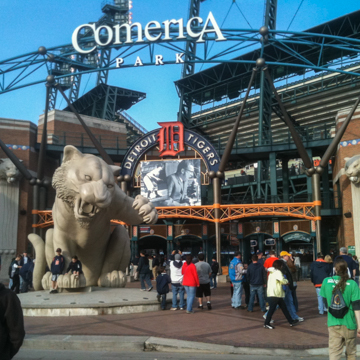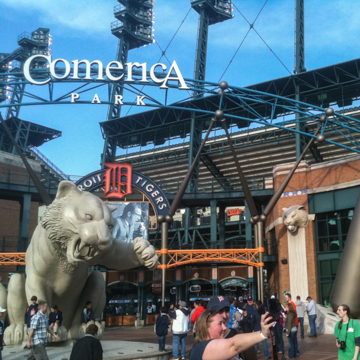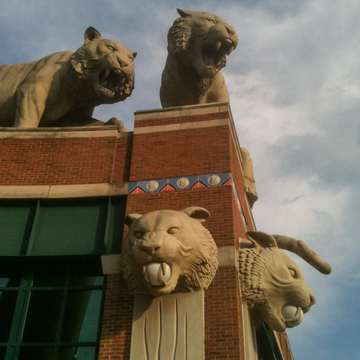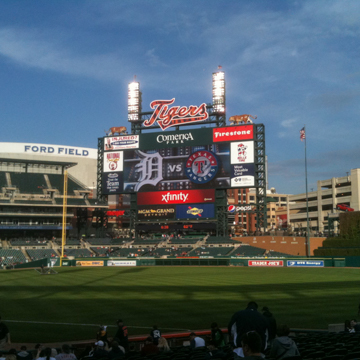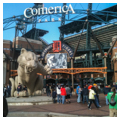After completing Oriole Park at Camden Yards in 1992 and Coors Field in Denver in 1995, HOK, the world's leading sports architecture firm, designed Comerica Park. The contemporary, state-of-the-art urban baseball stadium stands in the entertainment sector of Detroit. Comerica Park replaces the partially demolished Tiger Stadium at 211 Trumbull Avenue, one of America's oldest and most beloved baseball parks.
The retro brick-clad concrete and steel structure with soaring light towers resembles a traditional stadium grown to massive proportions. At the main gate huge tiger sculptures greet visitors. The grass-surfaced playing field is sunk twenty-five feet below street level. The stands overlook the downtown skyline of the city the stadium is supposed to revitalize. Among the amenities are indoor pitching and batting tunnels, wide seats (some cushioned), large clubhouses, and ample restrooms. When the Tigers hit a home run, two tigers atop the large scoreboard roar theatrically and the fountain in centerfield spews water.
Detroit–Wayne County Stadium Authority owns the stadium; Comerica, Inc., purchased naming rights. Public and private financing, of which more than half came from Mike Ilitch, owner of the Detroit Tigers, paid for the ballpark.


